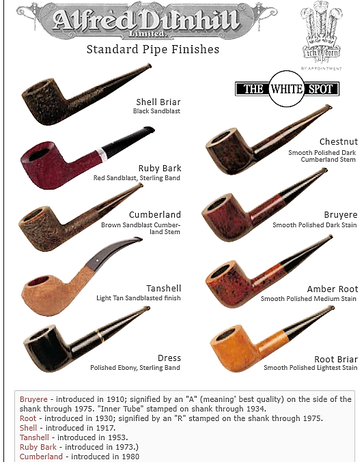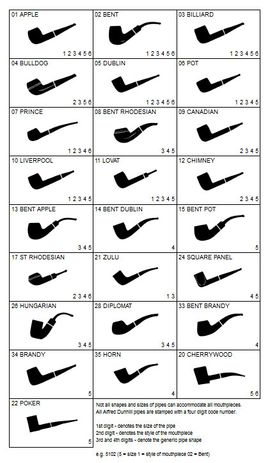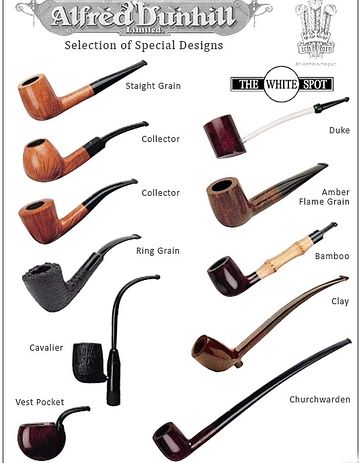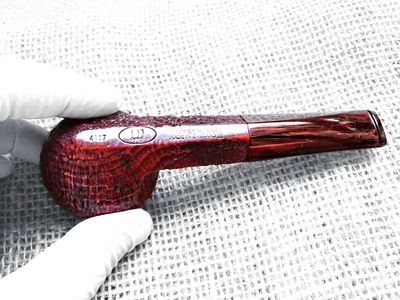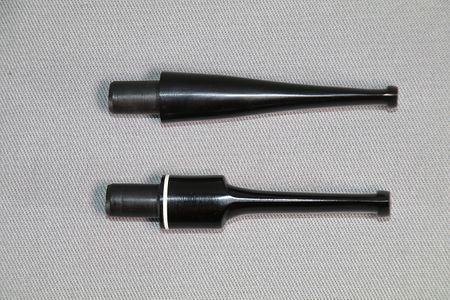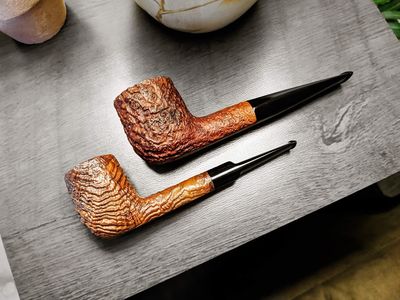Translations:Dunhill Shape Chart/1/en
Jump to navigation
Jump to search
*Note: for example, we have a Lovat 4111 - the standard lovat mouthpiece is saddle. In this case, the number is 1 and not 2.
Currently 35 shapes classified with 2-digit numbers.
Occasionally a piece of briar is just asking to be carved into a shape which is not in the standard list. The general term for such pipe shapes is “Quaint”. The current system with 4 digits visible has now been in place for over 30 years, and has proven to work very well for Dunhill, the trade, and for consumers.
| Example: 4117 | (4: Group; 1:tapered stem; 17: Shape: Straight Rhodesian* - Dunhill criteria. |
Although the scarcity of fine briar has always necessitated the pricing of Dunhill according to the amount of root employed in their manufacture, it is important to remember that, irrespective of size and price, they are of one quality only – the finest. The bowls are sorted into 6 groups.
